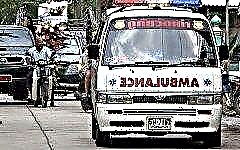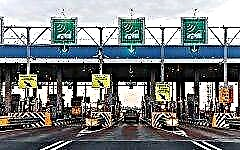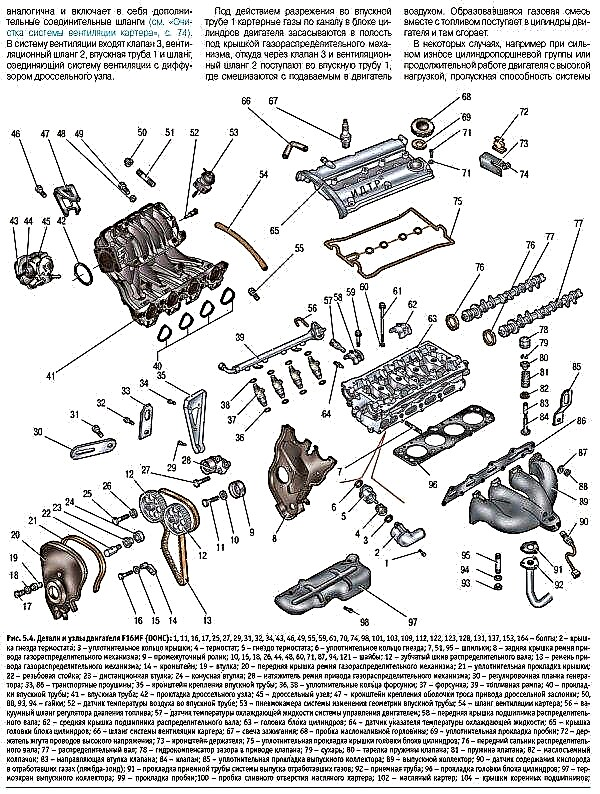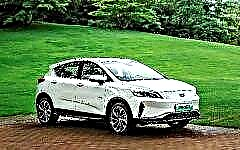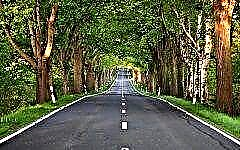
In order to enjoy your car for a long time, it is important to take into account not only the fuel prices and the characteristics of the car. One of the main aspects is the quality of the roads you drive on.
In this review, we will compare the highways of Germany and Japan - transport arteries designed for rapid internal and inter-regional traffic: urban and rural roads, highways (highways, motorways, expressways), access roads, etc.
Various sources were used for detailed analysis, including analytical materials:
- Dortmund University of Technology in transport planning;
- the Japanese Ministry of Land and Transport;
- The Global Economic Forum;
- The University of Wuppertal, which used anonymous data from navigation devices and car software to analyze road conditions in Germany and other countries.
Why are there many highways in Germany?

Mainly due to military reasons. During the Nazi rule, road construction developed at an active pace. The government was planning a war, and a wide transport network was required to effectively deploy troops.
Oddly enough, it intensified during the economic crisis, accompanied by inflation and high unemployment. The construction of the autobahns in some way solved social problems - by creating jobs, paid for with little money, but mainly only with food and housing.
Interesting fact: even during the Nazi period, Germany was serious about environmental protection, and the autobahns were designed in such a way as to have the least impact on the environment.
After the war, Germany became a NATO border country, which also required a reliable and fast way of transporting troops. Road construction continued; some sections were planned so that they could be used as makeshift airstrips.
Somewhere in the 70s, Germany became the "world automobile capital", increased investment in highways to strengthen local demand for cars. Today, in terms of traffic, it is the busiest country in its region: literally half of Europe passes through it. All of these people need to be moved quickly and efficiently. That is why there is a developed network of autobahns, which is constantly expanding and updating.
Why are good roads in Germany

The country has a high population density and a sufficiently productive economy to maintain a good quality of its transport infrastructure (there are more than 650 thousand km of roads, about 15,000 are high-speed).
First of all, the authorities regularly spend money on their maintenance and initiate repairs. Particular attention is paid to highways: cracks and holes on the Autobahn are much more dangerous than on city streets, given the speed at which cars travel.
In addition, the German way of building is very good, and the roads themselves are beautifully designed.
The population goes through very tough driving courses, which leads to better behavior of both drivers and pedestrians. Ultimately, they all have a better attitude towards the roads and other drivers.
Finally, the people who live along the access roads spend time and money on their own to keep them in good condition. They are proud of their home and territory, so they make every effort to make the passage to their households beautiful, clean and well-groomed.
What's in Japan

Japan is renowned for its beautiful landscapes that change from season to season. This means not only a pleasant view from the car window, but also specific road conditions: steep slopes and turns, unstable geological areas, the likelihood of earthquakes, storms, heavy snowfalls and other natural disasters. And constant victims: the number of road accidents reaches 800,000 a year.
Recently, traffic in Japan has become safer for all user groups: in the first half of 2020, according to WHO reports, the number of fatal accidents fell by half compared to the same periods in 2018-19.
Various measures are taken to prevent disasters and reduce damage, including the installation of fences in dangerous areas, monitoring the condition of the roadway and its rapid restoration.
But the Japanese road system is gigantic, and it’s impossible to keep track of everything. In addition, they are subordinate to different authorities - there are national highways, prefectural, municipal, private, etc. The attitude towards them is also different: maintenance, priority in the repair list and budget depend on the degree of importance and subordination of a particular road.
Much of Japanese infrastructure was built during the post-war recovery period and during the rapid economic growth (1950-70). As Japanese society and its incomes grew, the concern for survival diminished, and the need arose to use the accumulated capital. People began to actively buy cars, travel and do business, and the authorities were able to find funds to build additional roads, bridges and tunnels.
Features of Japanese and German roads
Road network
Transport infrastructure includes all traffic routes and associated facilities such as train stations and airports. In Germany, the state bears the bulk of the expansion and maintenance costs.
The country ranks 12th in the ranking of the largest road networks in the world - about 650,000 kilometers, while the internal highways alone account for more than 10,000 kilometers. In this respect, it lags behind the United States, China, India or Brazil. In China, for example, the total road length is over 4.2 million kilometers.
The road network is well developed. With a meager number of potholes, stray animals and ill-mannered motorists, driving is a pleasure. True, since January 2016, the authorities have been demanding payment for the right to travel on some highways. Those who use them regularly pay about 74 euros per year, short-term "passes" cost from 5 to 30 euros. The Ministry of Transport replenishes the treasury with 500 million euros per year. Unsurprisingly, the roads are kept in excellent condition.
The center of Japan also has a high population density, as a result, the streets are often narrow and crowded, and there are few parking spaces. The road network is about 1.3 million kilometers. 67% of cars are involved in traffic, the remaining 33% are motorcycles, mopeds and bicycles.
There are also toll highways here. Small and large, with a fixed fee or "remote". The driver receives a ticket at the entrance to the motorway and pays at the exit. The cost is based on the price per kilometer + local tax and consumption tax (8%). The average price per kilometer for a car is about 20-25 yen, and a trip, for example, from Tokyo to Nagoya will cost 7,000-8,000 yen (about 60 euros).
Most highways in Japan have two lanes in each direction, but it is not unusual for sections with three lanes or one (in hard-to-reach places like mountains and tunnels).
An interesting nuance: In the event of breakdowns and other problems on the road, the Japan Automobile Federation (JAF) offers 24/7 support. If you call between 09:00 and 18:00, you will be able to speak with an English-speaking staff member, at other times the service is in Japanese.
Signs and cameras
Where can I park? How far to stop? Who is allowed to travel here? Road signs answer all questions. There are many of them in Germany.
The Germans are known for their love of safety, order and cars, so it’s not surprising that the signs here are dazzling. This can sometimes be confusing. Therefore, the government again and again discusses the issue of abolishing some signs, but some are replaced by others.
In addition, in August last year, Germany bypassed all European countries in the number of permanently installed speed cameras (second place was taken by the United Kingdom with 6564 units).
Driving in Japan is not particularly difficult or dangerous because the quality of the “civilized” roads is great, well maintained, there are many signage, and the drivers are polite and careful.
Difficulties may arise with signs written in hieroglyphs. The latter are usually duplicated in Latin letters (especially names), but not always, so it is advisable to have maps and GPS available. There shouldn't be any surprises on the highway - signs and codes are usually in line with international standards. However, they may be slightly different, so it is advisable to study the information on Japanese road signs and driving rules before traveling.
Speed limits range from 30-50 km / h within cities and up to 110 km / h on highways. The speed is closely monitored. There are many cameras and radars on the roads - stationary and mobile (inside vehicles). There are few violations - as a rule, the Japanese are not inclined to recklessly and strenuously torment the gas pedal.
Traffic can be very slow due to heavy traffic, traffic lights, and other factors. The average speed on "slow" roads is 40-45 km per hour, which is very slow by world standards.
Traffic jams

The most popular form of transport in Germany remains the car. In January 2020 alone, the local vehicle fleet totaled 47.7 million cars. In 2019, the authorities registered more than 708,000 traffic reports, and the total length of congestion was almost 1.4 million kilometers.
There are also plenty of traffic jams in Japan. Congestion occurs both on intercity routes and in urban areas. This is a really serious problem for the country, so the construction of bypass roads and transport interchanges is a top priority - as is public transport, which reduces the number of private cars on the road. By the way, the latter in Japan come in different shapes and sizes - be prepared for the unexpected.
Investments
Germany often faces road infrastructure problems. Especially in the area of highways that need constant maintenance. Due to the constantly growing traffic loads, the federal government is forced to increase investment in the maintenance and expansion of road infrastructure.
In 2017, over 6 billion euros were invested in German highways; it is expected that by 2022 this amount will increase by another 2-2.5 billion. Compared to other transport routes, investment in trunk roads remains the highest. The most expensive project will be the construction of a tunnel in Freiburg (until 2030) - 163 million euros have already been allocated for it.
In Japan, over 42% of the construction budget goes to roads and bridges. The costs are 5-6 trillion yen per year. Active work is underway to expand the transport network and cover it with asphalt even in rural areas, ways are being sought to make roads safer and more durable, for which waterproof coatings and special thermal insulation are used.
Conclusion
Road quality is gradually improving around the world - especially in developing countries in Africa and Asia, which also show the highest rates of economic growth. At the same time, some developed countries are in decline due to the recent financial crisis, which has limited the amount of funds for road maintenance.
Official statistics speaks volumes about this most eloquently. Road quality is one of the components of the Global Competitiveness Index published annually by the World Economic Forum (WEF).
International experts sorted the countries of the world according to the degree of road condition, awarding them from 1 point (extremely low) to 7 (extremely high). In the chart with the participation of regions where the opportunity to collect data presented, there are 141 nominees.
Based on the presented picture, it is best to drive along the streets of Singapore and the Netherlands - with an index value of 6.5 and 6.4, these two countries were able to prevail over the others. Chad became the worst (1.9 points). Our heroes, Japan and Germany, ranked 5th (6.1) and 20th (5.3), respectively. Russia, for comparison, is in 99th place with a rating of 3.5 points.

|| list |
- Why are there many highways in Germany?
- Why are good roads in Germany
- What's in Japan
- Features of German and Japanese roads
- Road network
- Signs and cameras
- Traffic jams
- Investments



